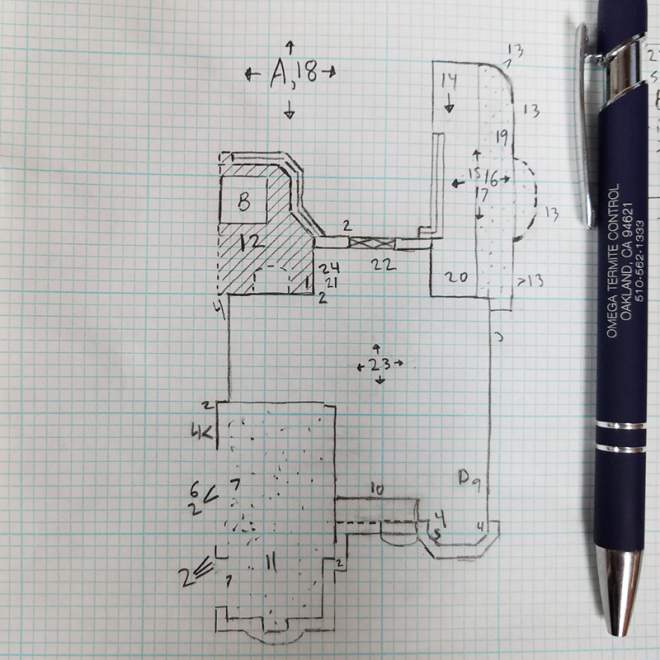Get Rid of Termites!
Do You Have Termites?
If you have termites, you definitely want to know about it. Termites destroy your most valuable asset: your home! Below we discuss how to inspect for termites and how to get rid of termites.
The first step in solving your termite issue is to get a wood destroying organism inspection, or more commonly known as a termite inspection. Your home may be in the clear…or you may have a termite colony feeding on your house. Only one way to know for sure!
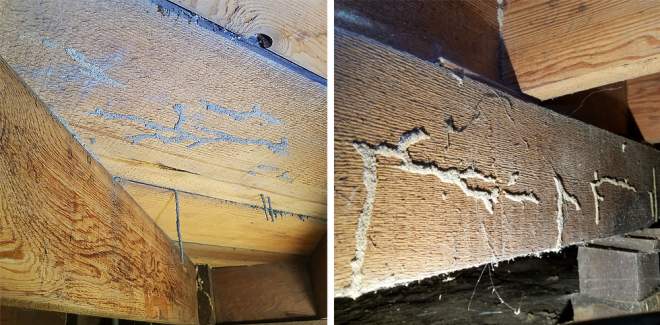
Types of Termites in the San Francisco Bay Area
There are 3 main species of termites found in the Bay Area:
-
Dampwood Termites – The largest and easiest termite to eradicate. Dampwood termites are locally present, however their population is much smaller than the other two species.
-
Drywood Termites – Commonly found in this area. Drywood termites don’t just feed on your home, they also live in it! These termites create tiny tunnels inside the wood members of your home by eating away at the wood. After a while these termites eat so much of the wood that your home can become structurally unsound!
Drywood termites like to keep the tunnels they create clean. To accomplish this they create a small kick-out hole where they push the fecal pellets outside of the tunnels. This creates small, or in some cases large, piles of “sand” that the homeowner may find. These piles of fecal pellets can be located anywhere in the home but are most commonly found in the attic and crawlspace.
-
Subterranean Termites – These are the most common species of termites found in the Bay Area. Subterranean termites live in the soil underneath or beside a home. In order to travel from one place to another subterranean termites create migratory and exploratory tubes from soil and their body’s secretions. They create these tubes to keep their environment moist and dark. These tubes also serve to protect the termites from predators.
Homeowners may see these earthen tubes emerging from:
- A wall in the home
- Exposed framing in the basement or crawlspace
- Bridging a concrete foundation from the soil to the wood members of your home
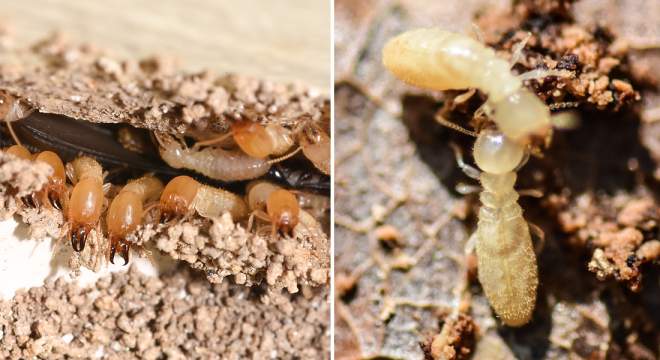
Termite Inspection
In addition to looking for the signs of drywood and subterranean termites in your home, there is one more main indicator of the presence of a termite infestation. When a termite colony grows in size to the point it can sustain itself, some of the alates or winged termites (which are the reproductive caste of the colony) will swarm to other areas. There can be hundreds, and even up to thousands, of winged termites flying around usually outside but sometimes this occurs inside your home. These alates fly off, pair up with another termite, discard their wings and start a new colony. A lot of homeowners can mistake the termite alates for flying ants. To be sure you are dealing with termites and not flying ants have an inspector come out and take a look.
Handy homeowners may want to inspect for termites in their homes. This is a great idea and should be practiced often. However, homeowners need to understand that termites do not want to be found by you or their natural predators. Termites go to great lengths to shield themselves from their surroundings which makes it particularly difficult to confirm their presence.
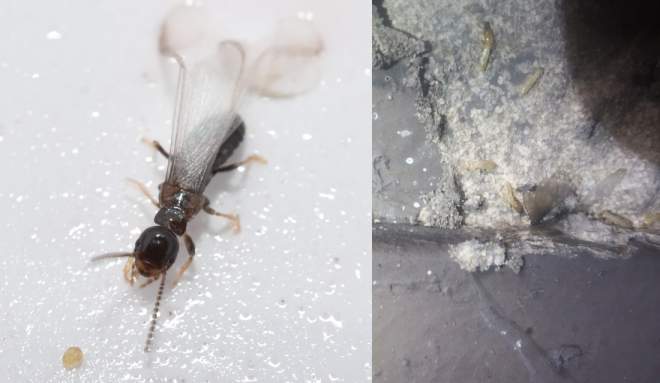
To have a better understanding of what’s going on behind their walls, homeowners need to call a pest control company and have a licensed inspector look at the entire home to determine if there is an infestation. The inspectors at Omega Termite and Pest Control are the most thoroughly trained in the industry. While other companies send sales staff to inspect and sell you a product, Omega’s goal is to give an objective assessment of your home. There have unfortunately been numerous times when homeowners are informed their house has an active infestation when in fact they do not. It is difficult to properly identify drywood termite pellets or to determine if the subterranean termite evidence is from a previous or current colony. The last thing we want is for a homeowner to pay for a service that is unnecessary.
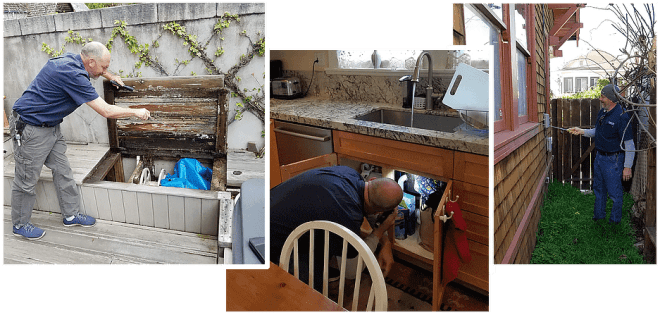
How to Get Rid of Termites
Treatment for Drywood Termites
Detecting and getting rid of a drywood termite infestation to ensure complete eradication is a difficult task. Because these colonies aren’t as large as subterranean colonies and because the evidence they leave behind is less obvious, finding the extent of the infestation can be extremely challenging. There are two methods of treating for drywoods: a localized termite treatment and a fumigation of the entire structure.
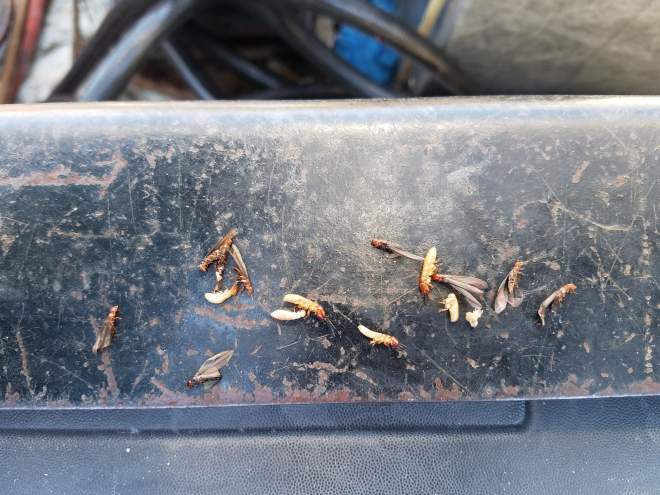
A Localized termite treatment can be effective. If you have visibly infested wood members this method will control the colony at that one area. However, if the colony has spread to other areas of your home, the localized termite treatment may not be effective at eradicating the entire population.
Fumigating the entire home is the only method of treatment that GUARANTEES complete eradication of this pest. While fumigation is 100% effective, it is also the more expensive choice. The process of fumigation includes prepping the content of your home, placing a tarp over the entire structure and introducing a fumigant under the tarp for a period of 3 days/2 nights. This means the homeowners will be displaced for that period of time.
Although the fumigation process is arduous, it is the method that will undoubtedly eradicate the drywood termites that are in your home. This treatment process reinforces why it is paramount to have a competent and thorough inspection.
Treatment for Subterranean Termites
Getting rid of subterranean termites is a physically challenging but straightforward process. Since these termites live in the soil beneath or next to your home, the idea is to apply a low toxicity termiticide into the ground where the colony lives. There are two main strategies to accomplish this:
-
Treating from the Exterior of the Home – If the termite colony is entering your home from the exterior of the structure we can apply treatment from the exterior. This would include digging a shallow trench around and abutting the entire structure and injecting the termiticide into the trench. If your home has or is surrounded by hardscapes it becomes necessary to drill holes through said hardscapes into the soil beneath. You then treat the soil with an injection rod and cover the holes with mortar when finished.
-
Treating from the Interior of the Home – If the termite colony is entering the structure via the crawl space it becomes necessary to treat from there. The first step for treatment is digging a trench around the entire perimeter of the crawl space and around the concrete piers and support posts. We then apply a low toxicity termiticide to the area. The termiticide allows the worker termites to transfer the material to the rest of the colony via feeding and grooming.
Subterranean termites have a caste system with the queen, king, soldiers, alates or winged termites and workers. The worker termites travel through the odorless termiticide and return to their colony to feed and groom the other termites. These natural behaviors allow the material to be transferred throughout the colony and results in complete eradication of your infestation.
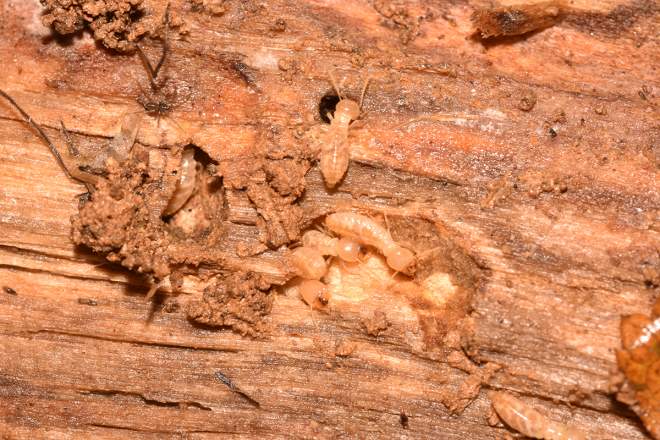
Once the treatment of your home has been completed you want to make sure all existing migratory tubes are destroyed. This is done simply by a taking a screwdriver and running it through the tubes so the termites can’t utilize them. These tubes are very soft so only a small amount of pressure is necessary. This is also important because we need to eliminate all evidence of the infestation so in the future it is not misidentified as an active colony.
Treatment for Dampwood Termites
Getting rid of dampwood termites is an essential part of protecting your home. Dampwood termites are the largest in size of the three termite species in California. The alates can be up to 1 inch in length while subterranean termites are roughly the size of an ant. Dampwood termites infest wood with a very high moisture content. They are commonly found in logs, stumps and decaying wood.
A dampwood termite infestation in your home will be found in wet and decaying wood, usually on an exterior deck that is constantly moist and fungus damaged. The good news is no treatment is necessary! To get rid of dampwood termites the homeowner only needs to replace the infested and damaged wood members and keep the new wood properly sealed. That’s it!
Alternative Treatment Strategies
To get rid of termites other companies may recommend an orange oil treatment. While orange oil is a more natural option, in Omega’s experience it is far less effective at controlling a termite infestation compared to other available products. Omega insists on using a low toxicity termiticide that has been approved by both state and federal regulators as an effective method to controlling termites.
Omega, through our strong history of environmental stewardship and excellence in the pest management field, is one of only 3% of companies nationally that qualified as both QualityPro and GreenPro Certified. Being certified as QualityPro means the employees of Omega are held to a higher standard and are constantly on the cutting edge of the industry through training and education. Qualifying as GreenPro certified assures commercial and residential customers that Omega offers reduced risk, comprehensive, and effective pest control services with the environment in mind. With these certifications, customers can have the utmost confidence Omega will solve their pest problems in the most responsible manner. Click on our coupon below to take advantage of our special offer!
Download Coupon to Get Rid of Termites
Do I have termites?
There is a high probability that you have some type of a termite infestation or fungus infections in your home. Sometimes it’s obvious when you have termites; if you have hundreds or thousands of flying termites (alates) flying inside or outside you home – you have termites. When you see piles of “sand” inside or beneath your home – you have termites. When you see mud tubes on your wall or beneath your home – you have termites.
What do termites look like?
Individuals within a termite colony may appear quite different. A termite colony will include workers, soldiers and alates (reproductives) which all look different. The workers are the most prevalent within the colony and are pale and soft-bodied. The alates have wings and are commonly mistaken for flying ants. A close examination reveals that termites have a much wider waste than ants. Termites also have a straight antenna while the ants’ antennas are elbowed. Soldier termites resemble the workers but have large mandibles that they use to protect the colony.
How often do I need to get a termite inspection in my home?
It is a good idea to have your home inspected every 2 years. Termites can fly into your home at any time and it’s important to find out about an infestation before they cause any damage.
Who pays for termite inspection?
There is no set rule as to who pays for a termite inspection during a real estate transaction. Generally, the seller will pay for an inspection so they can find out the condition of the home and to better determine the listing price.
How does a termite inspection work?
A “termite” inspection is a misnomer. The correct term is a wood destroying organism inspection. These inspections are performed by inspectors that are licensed by the state of California and are required to follow strict guidelines on what should be included in the report. Some of the required items that must be included in a report are:
- The presence of subterranean termites, drywood termites, dampwood termites and wood
destroying beetles - The presence of wood destroying fungus or dry rot in the house including:
- Subarea support framing
- Roof framing
- Trim
- Windows
- Decks
- Siding
- Excessive moisture conditions including:
- Leaks under sinks
- Leaks at toilets
- Leaks under the house
- Water damage behind shower walls
- Water damage beneath floor coverings
- Faulty grade conditions where the adjacent grade level is above the top of the foundation or slab.
- Cellulose debris (wood or cardboard) beneath the home. This is food for subterranean termites and should be removed.
- Earth to wood contacts that can lead to dry rot or termite infestations.
- Stall showers that leak and cause damage.
- Any condition that is conducive to future infections or infestations.
As you can see the inspection is large in scale and it is critical that the homeowner hire an inspection company that is well trained in identifying and correcting all of these issues, not just finding termites.
